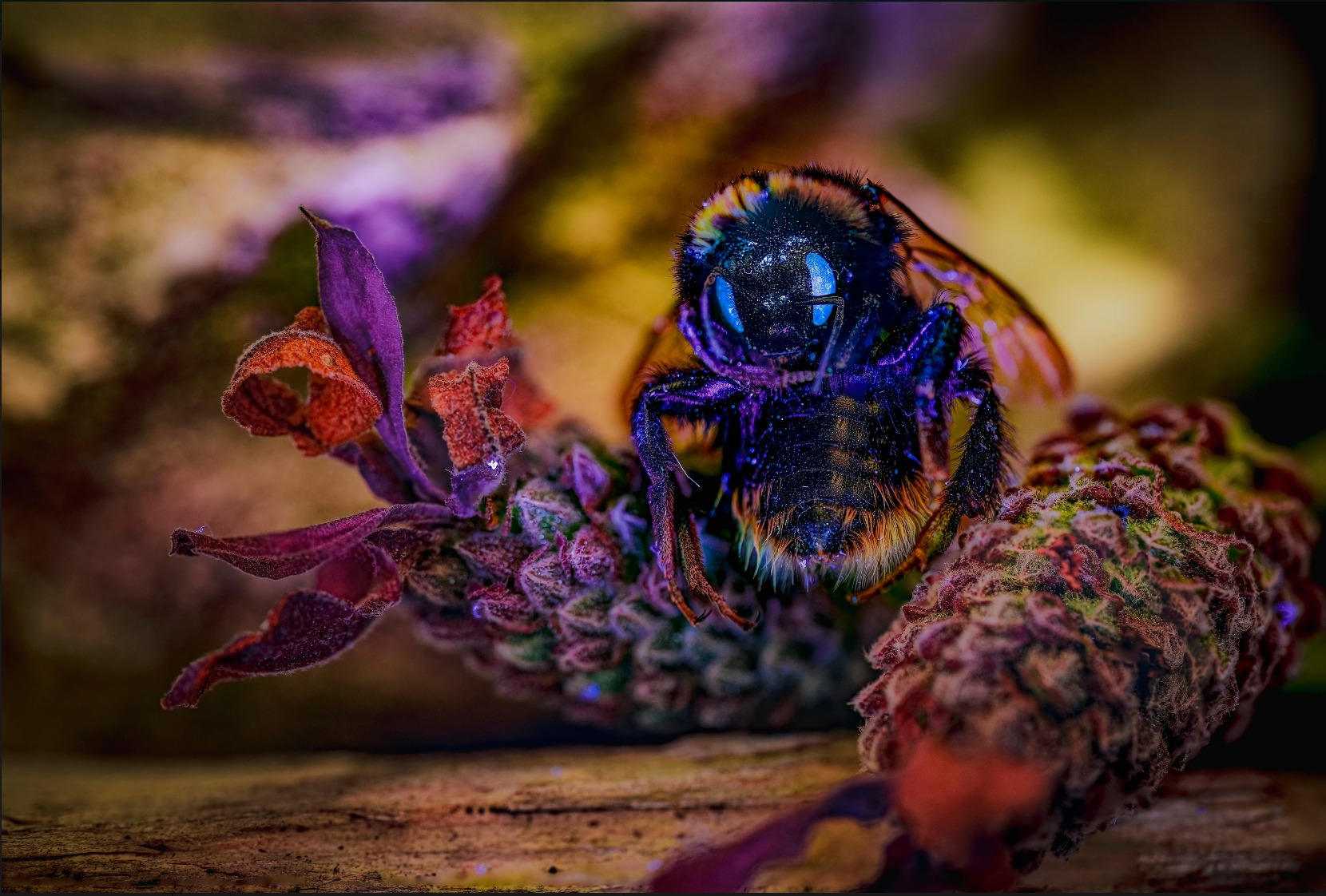Bumblebee Blues
Toby Schrapel
Category: Utilises Macrophotography
Some of these fluorescent materials in the bumblebee’s eye correspond to the rhodopsin and non-rhodopsin protein complex. Insects and arachnids use these to determine the nature and location of the light source or sources. They also have a middle eye called the ocellus, which is a simple eye that helps the bee to detect ultraviolet light.
This was all set up on top of my laptop, I got my 100mm Ultra macro lens, set the camera to 25 seconds ISO 100 F3.5, turned the room lights off and I then used my phone screen as a light painting source to get a nice balance of light, then using my UV torch I shone that from the top, left, right and directly in front to get as much fluorescence as possible.
BEAKER STREET SCIENCE PHOTOGRAPHY PRIZE
This photograph was a finalist in Beaker Street’s annual Science Photography Prize. This highly-respected prize invites all Tasmanians to showcase the wonders of our extraordinary part of the world — which is teeming with science and scientists. Finalist images are displayed at the Tasmanian Museum and Art Gallery during Beaker Street Festival each August, with great prizes on offer for Judges’ and People’s Choice winners.
The Beaker Street Science Photography Prize would not be possible without the support of Full Gamut, Tasmania’s premier fine art printers and long-time sponsor of this competition. Many thanks also go to Pennicott Wilderness Journeys, which donates a generous prize for the People’s Choice winner.





